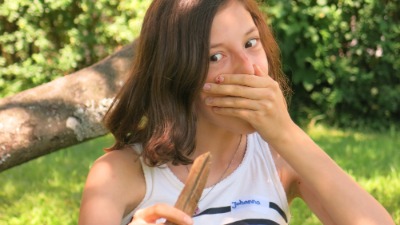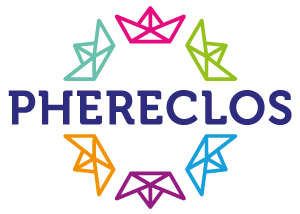Doing World Heritage - Understanding World Heritage
- Austria,Vienna, Upper Austria, Carinthia
- 2014

| Time frame | |
| Categories | |
| Level of Schools | |
| External Partners | |
| Type of Schools | |
| URL | |
| Number of Schools involved | |
| Number of Schoolheads involved | |
| Number of Teachers involved | |
| Number of Students involved | |
| Number of Parents involved | |
| Number of External Partners involved |
In the project the participating pupils and schools were placed at the centre of a research process about cultural heritage and technology. They were actively involved in the research of a specific archaeological world heritage called the “Prehistoric Pile Dwellings around the Alps” and were thus encouraged to explore their own environment and history. Through active participation in the cultural heritage and through transparent research the positive basic attitude was promoted and expanded. A particular challenge was to foster a local identification with an archaeological heritage and link it with a global understanding of cultural heritage.
In the project the participating pupils and the schools were placed at the centre of a research process about cultural heritage and technology. They were actively involved in the research of a specific archaeological world heritage (the Prehistoric Pile Dwellings around the Alps - www.palafittes.org) and were thus encouraged to explore their own environment and history. Through active participation in the cultural heritage and through transparent research the positive basic attitude was promoted and expanded. A particular challenge was to foster a local identification with an archaeological heritage and link it with a global understanding of cultural heritage.
The project travel exhibition is still presented at various places. More than 20.000 people already visited the exhibition.
The main focus was to get to know different research methods and technologies and to be able to apply them by yourself. Basic and expert workshops structured the learning process within the project time frame. Various actors and institutions were involved in the process. Interview partners were visited or invited to the schools. Work was done in groups and also in small teams not only at the school premises but also on field trips.
The schools were the centre for the meetings, workshops and also the later presentations in the course of a touring exhibition.
Project funding under the Sparkling Science grant of the Bundeministeriums für Wissenschaft, Forschung und Wirtschaft (Ministry of Science, Research and Economy) and with in-kind contributions (approx. 10%)
The project showed how diverse a UNESCO World Heritage site in Austria is, and that the access and interpretation of the past is a very personal thing. Although the entry of the pile dwellings on the list of UNESCO World Heritage sites is generally perceived very positive, it is scarcely known that this is primarily about the protection of sensitive cultural characteristics. Due to the protection needs of the sites and their location underwater, the pile dwellings are very limited for a touristic use. Likewise, other interests of the lakes are sometimes in conflict with the cultural heritage.
Children, teachers and schools were included as active partners in the whole research process. Due to the design of the research process and the presentation of the project results on various levels also parents, relatives and other people in the local area were included.
Within the project it was clearly demonstrated that research in a local context with children and schools is possible and will give a plethora of useful results. Not only as basis for further scientific analysis but also to change the mindset of the involved children, teachers and other project partners. The project funding allowed a greater mobility and more time, which is absolutely essential for a positive result.
The project involved the teachers in the project design at the beginning to create a better inclusion of the school pupils in the research project. (Also one team member of the research unit is a teacher.) Children were introduced into various research practises, e.g. field research via interviews, cognitive mental maps. Mobile phones, 3D-Scanners and 3D-Printers were included in the learning process.
The special feature of the Sparkling Science programme was the core precondition for funding that scientists had to do their research side by side with young people. During the six funding cycles a development from a rather classical science communication programme in schools to a genuine Citizen Science programme was triggered. Meanwhile, in a total of 299 funded projects, scientists worked side by side with young people on their actual research questions. Overall more than 500 schools, 200 research institutions and 185 partner organisations from economy or society have been involved. Almost 30.000 school pupils, more than 4.000 researchers and 2.500 teachers have been directly and actively involved. In the Doing World Heritage project the participating school children had their own share of research and were not only used to gather new data. Innovative ways of displaying the data were included by using technologies from drama (improvisation theater) and arts (comic production out of the results) with the final product of a (still) wandering exhibition. Children had a serial of different workshops to different extent concerning the proportion of time spent during their school depending on the age group and the enthusiasm and flexibility of the teachers. The school collaboration project parts was explicitly designed in a way to make it easy to incorporate in normal school routine or even to create special project weeks for a more profound examination of the research topics.
Archaeological artifacts (originals and copies) were used to create a personal experience and show the extraordinary quality of the cultural heritage sites. Field trips encouraged the children to explore their local heritage in oral encounters (e.g. interviews with various stakeholders) and topographical understanding (e.g. mental maps).
The project design was developed together with teachers. Research and analysis was carried out with children. Obviously, some of the research results of the children (e.g. the basic interviews) was refined and taken into a next level by the university researchers (e.g. expert interviews).
The project used the learning from the teachers to design the workshops. Children gave their own expertise and viewpoints. Scientists and technology partners shared their methodologies and technologies.
More girls participated in the project (51:34). Emphasis was laid on equal participation in the technology based workshops (3D-technologies). In the project regions (Upper Austria and Carinthia) the percentage of pupils with a migration background is rather low (5 children out of 85) and no exclusion was noted. Working on a global heritage topic also aspects of different cultural backgrounds were addressed and included into the reflections in the classes.
Ethical aspects were mainly linked to the question of a common and shared heritage. Who owns archaeological artifacts? Who is responsible? How useful is the protection of heritage for society? Also the question where modern technology will lead our society was addressed in the workshops.
Different fields of research have been involved: archaeology, European ethnology, museology, sociology
Supplementing the academic research aspects of modern technology and engineering were included (esp. 3D-technology). Also the analysis of the project data with innovative means included cross-sectoral aspects (e.g. theater methods). Other stakeholders from NGOs (e.g. associations), public bodies (municipalities) and museums were included in the process.
Different schools, sometimes also in a multi-age-setting - have been involved into the project. Scientists always acted on an eye level with children and teachers.
Local heritage was linked to global heritage (local pile dwelling research to the UNESCO world heritage). Regional tourism analysed. Local companies and stakeholders involved.
All schools, companies and organizations are part of the workgroup and are able to share their thoughts in meetings. How they design workshops, project days etc. is in the responsibility of every single school.
Presentations were designed for the schools as exhibition space and could be adapted according to their needs.
The project aimed to empower local people to use 3D-technology to record, present and use their cultural heritage.
The project showed clearly the challenges of working together in a cross-curricular and trans-disciplinary way in the Austrian formal school system. Good cooperation needs a lot of flexibility and resources. If all partners are positive and interested it works very well nonetheless.
Universities and museums acted as research partners and workshop facilitators; project outline and material was created with the Kinderbüro and Otelo eGen; the municipalities, the Educational Directorate Upper Austria and the UNESCO commission supported the project with public awareness and at the events; Evo- tech acted as case study for a field trip; the associations gave informations and linked to the local project areas
The project evaluation included also learnings of the research organisations and the schools.
The project documentation and evaluation forms provided by the funding body (sparkling science) and the implementation team.
